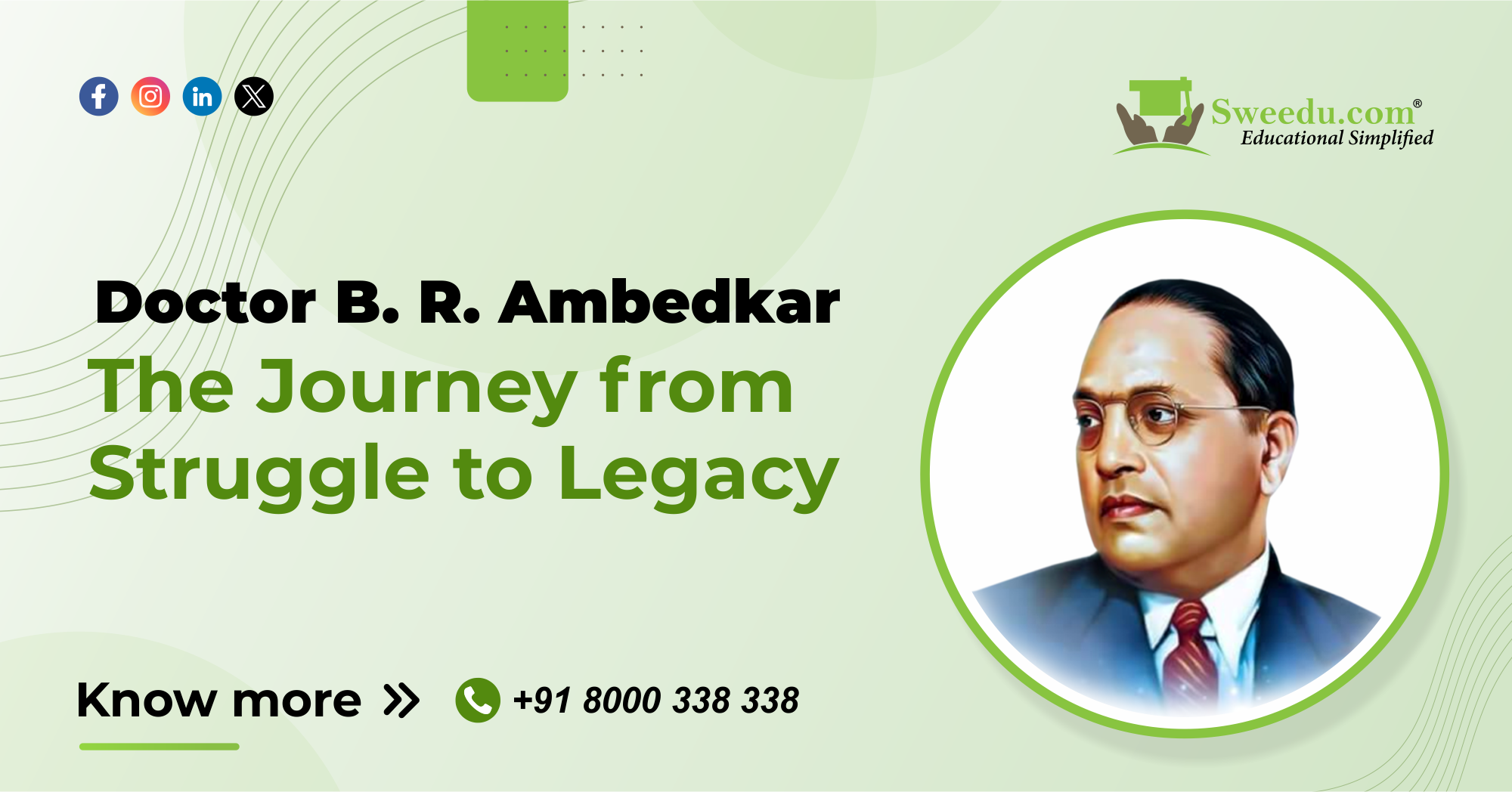
The man who came to be known affectionately as Babasaheb became India’s chief architect for the Constitution by fighting tooth and nail with the other activists and revolutionary thinkers and thus immortal became an everlasting voice for the ill-treat minorities. It is a life journey into and out of society, from a socially outcast child to one of the most significant intellectuals of the world – a story of courage, determination, and relentless effort for equality.
Early Life and Struggles
Born on the 14th of April, 1891, in Mhow, a small town in Madhya Pradesh, Dr. B.R. Ambedkar was from a Mahar caste, popularly called “untouchable” because of the orthodox Hindu society. Born to a family of serving the British Indian Army, Ambedkar was treated in a discriminatory way from a very young age. At school, he was not allowed to sit with the other children, not permitted to drink water and had to study in isolation.
Young Bhim had developed reading habits which went beyond satisfaction. His father, who valued education very highly, made sure that Ambedkar completed his education even with all the odds against her due to society. All this initial experience of injustice matured an inner rebellion, the seeds of reform in him.
Excellence in Academics and International Exposure
Dr. Ambedkar’s academic career was very great. He graduated from Elphinstone College, Mumbai and went abroad for post-graduate studies, which was an opportunity unheard of for someone of his status or background at that time. He completed his master’s and doctorate degrees in economics from Columbia University in the USA. He then proceeded to the London School of Economics and Gray’s Inn, where he completed his becoming a barrister and completed another doctorate of economics course.
He was not just a scholar, he was a thinker who analyse critically the origin causes of social inequalities in India and then provided correct solutions.
Crusader for Social Justice
On his return to India, Dr. Ambedkar dedicated himself to the upliftment of the Dalit and other minor caste that was called untouchable. He began movements for equal access to water, temples and education against centuries of caste discrimination. The Mahad Satyagraha (1927) and Kalaram Temple entry struggle are some instances that exemplify his fierce resistance against untouchability.
He set up the Independent Labour Party in 1936, which ultimately became the Scheduled Castes Federation and became instrumental in the voice of the voiceless in British India.
He also wrote “Annihilation of Caste,” an innovative work that directly condemned and criticized the caste system and orthodox Hindu beliefs sustaining it.
Father of the Indian Constitution
Post-independence, he was appointed as the Chairman of the Drafting Committee of the Constituent Assembly. Thus, he played an important role in framing the Indian Constitution, which guaranteed:
-
- Equality before law
- Abolition of untouchability
- Fundamental rights for all citizens
- Reservation in education and jobs for SC/ST communities
His philosophy on democracy was rooted in liberty, equality and fraternity, which was derived, as he stated from a deep study of constitutional systems worldwide and the realities of India.
Later Life and Embrace of Buddhism
Dr. Ambedkar was quite successful in his achievements; yet, he had a deep disillusionment with the caste system that Hinduism projected. After years of study and spiritual research, he finally converted to Buddhism on October 14, 1956, in a historic mass conversion in Nagpur along with over 5 lakh followers. He believed that Buddhism was a way of peace, rationality and equality.
This was a social revolution rather than a religious change, thus laying the foundation for a new identity among Dalits and the birth of the Navayana (Neo-Buddhist) movement.
Death and Legacy
- B. R. Ambedkar died on December 6, 1956, in Delhi, leaving behind a void but one which gradually filled by the ideals and contributions towards India’s social and political fabric.
In 1990, he was posthumously awarded the Bharat Ratna, India’s highest civilian honour.
Legacy That Lives On
Today we don’t just remember Dr. B.R. Ambedkar as a Dalit icon or a legal expert but we remember him as a national hero who changed the future of India. His life has inspired:
- Laws and policies for social justice and affirmative action.
- The national movement for the Pan-Indian Dalit demand for dignity and equality.
- A number of scholars, leaders and reformers across the globe.
His birthday is celebrated on April 14 as Ambedkar Jayanti is a public holiday in India. Statues, institutions and movements across the country are created in his name and in his honour.
Ambedkar’s resounding teachings, especially his call to educate, agitate and organize, still resonate with the society today. Such propelling ideas could illumine a blueprint toward building a just and inclusive society in a world still grappling with inequity.
What Students Can Learn from Dr. B.R. Ambedkar:
One of the very strong and powerful quotes by Dr. Ambedkar is “Education is the most powerful weapon for change.”
Dr. Ambedkar’s relentless pursuit of education can serve as an inspiration to students even in the face of the greatest odds. He demonstrated that education is the weapon to shatter even the most invincible shackles of social injustices. Likewise, if students dedicate themselves to education with seriousness and purpose, they can become empowered to overthrow inequitable systems and create a tomorrow founded on equality, integrity and progress.
Conclusion
Dr. B.R. Ambedkar then was also a story about individual success transformed into a clarion call for courage through education and action in the search for real change. From that child who was denied water in school to the man who wrote the powerful legal document for India, this is the journey of Dr. B.R. Ambedkar, a tribute to a relentless human spirit.
He did not fight just for Dalits, he fought for human dignity. And that legacy is timeless and always is remembered by the coming generations.





